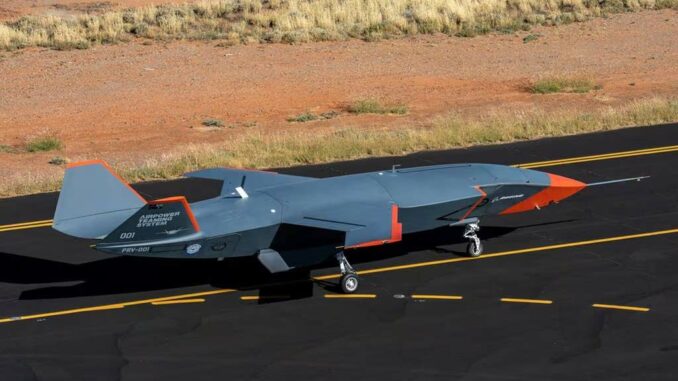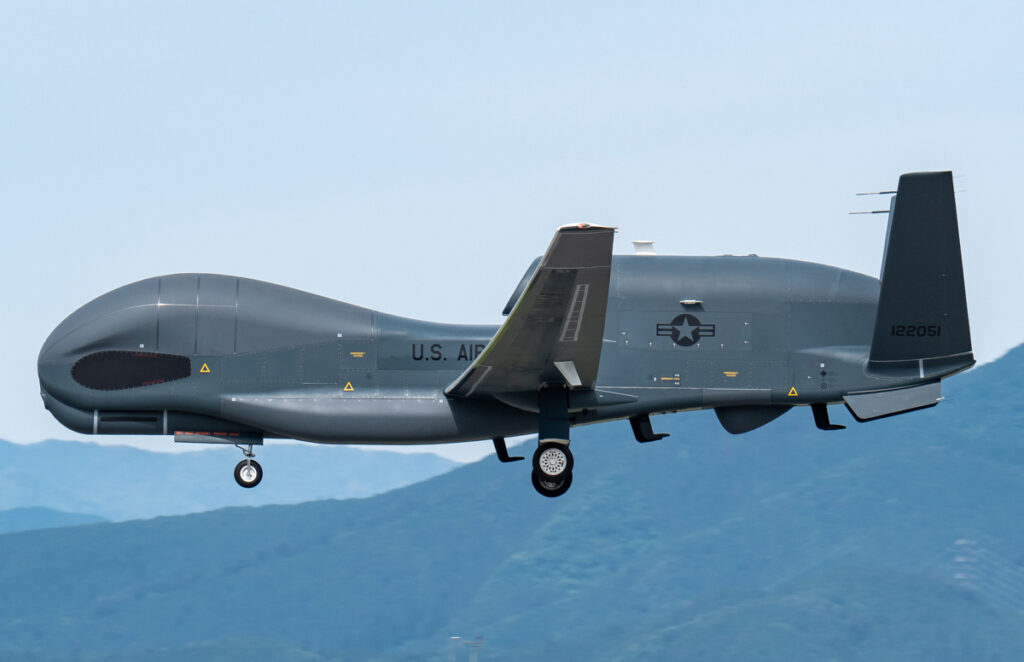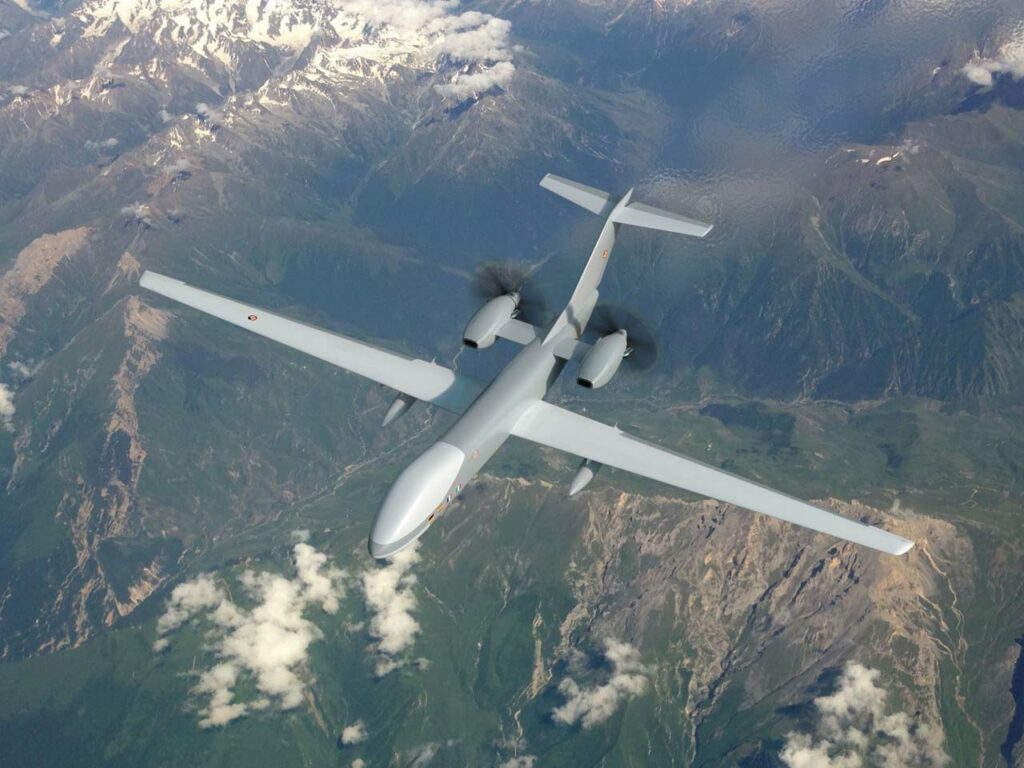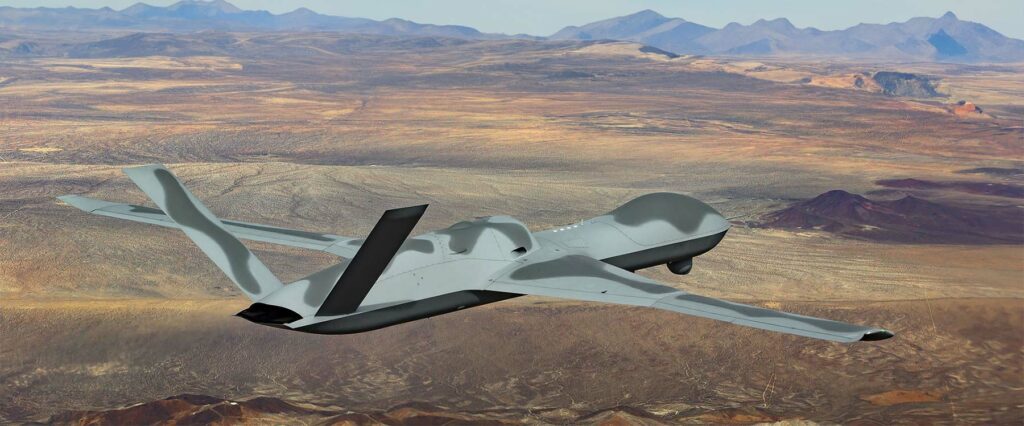
Analysis of the 10 Pioneer Companies in Autonomous Military Drones Integrating AI: Their Projects, Successes, and Geopolitical Implications.
Autonomous military drones, combined with artificial intelligence (AI), are redefining modern warfare. Companies worldwide are developing these technologies to enhance surveillance, reconnaissance, and airstrike capabilities. These systems enable real-time decision-making, often without human intervention, increasing the precision and speed of missions. This article explores the ten most advanced companies in the development of these drones, their missions, ongoing projects, and the political and geopolitical implications of their products.
1. General Atomics Aeronautical Systems
History and Projects: Founded in 1993 in the United States, General Atomics is a pioneer in developing autonomous military drones with artificial intelligence. Their MQ-9 Reaper model, used by the U.S. military and allies, is an armed drone capable of surveillance, reconnaissance, and precision strikes. The integration of AI allows the drone to operate autonomously for long and complex missions.
Objectives and Current Developments: Currently, General Atomics is working on enhancing its autonomy systems by integrating AI in areas such as predictive target analysis and autonomous navigation in contested environments.
Geopolitical Implications: General Atomics drones are primarily deployed in war theaters such as the Middle East, influencing U.S. defense strategies and international alliances. The increasing use of these drones in conflict zones raises questions about the autonomy of weapon systems and ethical implications.

2. Northrop Grumman
History and Projects: Based in the United States, Northrop Grumman is a global leader in defense technologies. Their Global Hawk program, launched in 1998, is an autonomous drone specialized in high-altitude surveillance over long distances. Using AI algorithms, the Global Hawk can identify and track targets with increased accuracy while relaying critical information in real time.
Objectives and Current Developments: The company focuses on integrating AI to improve its drones’ capabilities to analyze large amounts of surveillance data and identify threats in real time.
Geopolitical Implications: The Global Hawk is widely used by U.S. forces for reconnaissance missions in Asia and the Middle East, reinforcing the U.S. position as a leader in military surveillance technologies. Its use in sensitive conflicts could escalate geopolitical tensions.
3. BAE Systems
History and Projects: BAE Systems, based in the UK, has developed the Taranis, an ambitious autonomous combat drone project. Launched in 2010, Taranis integrates AI for attack, surveillance, and reconnaissance missions. Its ability to make in-flight decisions and navigate contested environments without human intervention makes it a preferred tool for complex military operations.
Objectives and Current Developments: The focus is on developing combat autonomy through AI systems that allow Taranis to choose optimal targets and trajectories based on perceived threats.
Geopolitical Implications: The Taranis has the potential to redefine UK air defense capabilities, influencing the balance of power in Europe. Its development also raises concerns about the proliferation of armed autonomous drones.
4. Elbit Systems
History and Projects: Israel is at the forefront of military drone development, and Elbit Systems is a key player. Its Hermes 900 model is a surveillance and combat drone that integrates AI systems for target identification and autonomous mission management. The drone is used by the Israeli Defense Forces and other international forces.
Objectives and Current Developments: Elbit Systems is developing machine learning algorithms to enhance the drone’s capacity to analyze threats and propose automated responses, thereby increasing the effectiveness of combat missions.
Geopolitical Implications: Elbit Systems drones are often deployed in sensitive conflict areas, strengthening Israeli defense capabilities while raising questions about the use of autonomous drones in asymmetric conflicts.

5. Airbus Defence and Space
History and Projects: Airbus, through its Defence and Space division, is working on the Eurodrone, a European project designed to meet surveillance and reconnaissance needs. Airbus integrates AI systems to make the Eurodrone capable of making autonomous decisions in flight.
Objectives and Current Developments: Airbus aims to equip the drone with enhanced autonomous capabilities for long-duration surveillance missions, as well as integration capabilities with European defense systems.
Geopolitical Implications: The development of the Eurodrone enhances Europe’s technological sovereignty and its independence from American systems. This project could also influence European defense strategies against cross-border threats.
6. Israel Aerospace Industries (IAI)
History and Projects: IAI is a leading Israeli defense company known for its autonomous military drones incorporating artificial intelligence. Its flagship model, the Heron TP, is a long-range surveillance drone used for strategic missions by the Israeli military and other international forces. The Heron TP can perform reconnaissance, surveillance, and even precision strikes with a high degree of autonomy.
Objectives and Current Developments: IAI is working on integrating advanced AI algorithms to enhance the drone’s capacity to conduct autonomous missions, particularly in target detection and real-time trajectory optimization.
Geopolitical Implications: The Heron TP is deployed in several conflict zones, reinforcing Israel’s geopolitical position while encouraging other powers to develop their own autonomous drone capabilities.
7. Lockheed Martin
History and Projects: Lockheed Martin, one of the largest suppliers of weapons and military technologies in the United States, develops autonomous military drones such as the RQ-170 Sentinel. Primarily used for surveillance missions, this drone benefits from AI algorithms for autonomous navigation and intelligence gathering.
Objectives and Current Developments: Lockheed Martin focuses on integrating AI to enhance the effectiveness of drones in high-precision reconnaissance missions. Current efforts aim to improve the drones’ autonomy to reduce human intervention in hostile environments.
Geopolitical Implications: Lockheed Martin, through its partnerships with the U.S. government, reinforces the United States’ position as a global leader in autonomous defense technologies, thereby increasing its influence in international conflicts.
8. Thales Group
History and Projects: Thales, based in France, is a major player in the field of autonomous military drones. Their Watchkeeper system is one of the most advanced drones in Europe, designed for tactical surveillance and reconnaissance. Thales uses artificial intelligence to enable autonomous mission management and real-time data analysis.
Objectives and Current Developments: Thales is working on enhancements to the decision-making autonomy of drones, particularly for missions in hostile environments or military emergency situations.
Geopolitical Implications: The Watchkeeper strengthens the military capabilities of several European countries and contributes to greater strategic autonomy for the European Union in defense matters, influencing transatlantic defense relations.

9. Boeing Defense, Space & Security
History and Projects: Boeing, through its Defense, Space & Security division, has developed military drones such as the MQ-25 Stingray, an autonomous drone used for refueling fighter jets in flight. This model employs AI technologies to optimize refueling missions and minimize risks.
Objectives and Current Developments: Boeing is investing in the development of autonomous combat drones capable of complex missions without human intervention, such as the Loyal Wingman, a project aimed at accompanying fighter jets with AI-equipped autonomous drones.
Geopolitical Implications: By strengthening the U.S. military fleet, Boeing influences the balance of power in aerial conflicts and prompts other countries to enhance their own autonomous capabilities.
10. Kronshtadt Group
History and Projects: Based in Russia, Kronshtadt is a leader in the development of autonomous military drones. Their Orion-E model is a combat drone capable of conducting reconnaissance and strike missions with a high degree of autonomy, utilizing AI algorithms for target detection and trajectory management.
Objectives and Current Developments: Kronshtadt focuses on optimizing the autonomy of its drones to make them capable of long-distance missions while integrating secure communication systems.
Geopolitical Implications: The development of autonomous drones in Russia, through Kronshtadt, enhances Russian military capabilities, particularly in conflict zones in Eastern Europe and the Middle East. This technological positioning makes Russia a key player in the military drone race.
Political and Geopolitical Consequences of Autonomous Military Drones
The development of autonomous military drones profoundly disrupts geopolitical and strategic dynamics. These systems, capable of conducting surveillance, reconnaissance, and strike operations with minimal human intervention, alter the way conflicts are waged. States that master this technology gain a significant strategic advantage, prompting other countries to intensify their own research.
From a political perspective, the use of these drones raises questions about national sovereignty, the transparency of military operations, and the ethics of autonomous weapon systems. The lack of a robust international regulatory framework for armed autonomous drones risks exacerbating tensions between global powers.
War Wings Daily is an independant magazine.